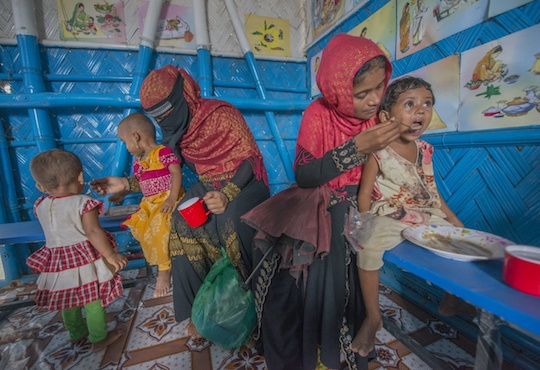Three million people in the Asia Pacific region must be lifted out of hunger each month, over the next decade if the region is to meet Sustainable Development Goal 2 (SDG) of zero hunger by end 2030, says a new UN report.
While “substantial advances” have been made in the region towards eliminating hunger and malnutrition, nearly half a billion people in the Asia Pacific remain undernourished, said the report, released Wednesday (11 December) by four UN agencies.
“There is increased awareness of the dangers of obesity,” David Dawe, senior economist for UN’s Food and Agriculture Organization (FAO) and an author of the report, tells SciDev.Net. “[That] is a good thing. However, we must also be sure not to forget about the large numbers of people who still suffer from undernutrition.”
In 2018, an estimated 77 million under-five children in Asia Pacific were stunted and 32.5 million children suffered from wasting, the report noted.
“The fight against child undernutrition is complicated by a general and growing prevalence of other forms of malnutrition,” said the report. “In many countries in the region, child undernutrition, overweight, obesity and micronutrient deficiencies are converging at the national level, in individual households, and even, in some cases, in the same person.”
For Dawe, the fact that many countries in the region are making progress on food fortification and eliminating trans-fatty acids from the food supply chain is the most interesting part of the annual report. “This progress will lead to improved nutrition in millions of people,” he says.
Dawe also hopes Asia Pacific countries will place more emphasis on agricultural diversification. “Efforts in this area will pay off in terms of more income for farmers and more availability of nutritious foods for poor consumers.”
Read full original article at eco-business.com
Photo credit: EU Civil Protection and Humanitarian Aid, CC BY-SA 2.0
17 diciembre 2019Original Author: SciDev Net

